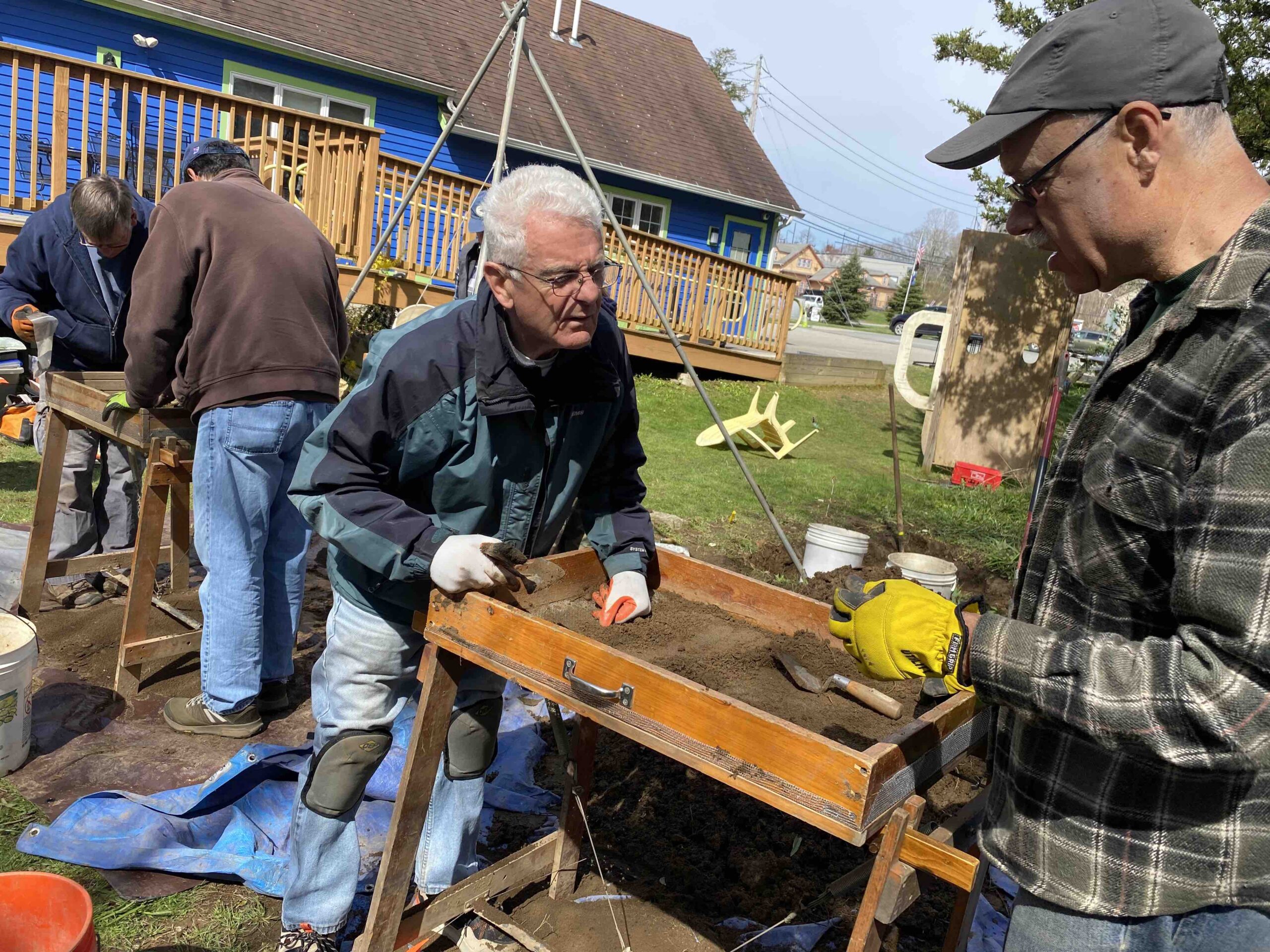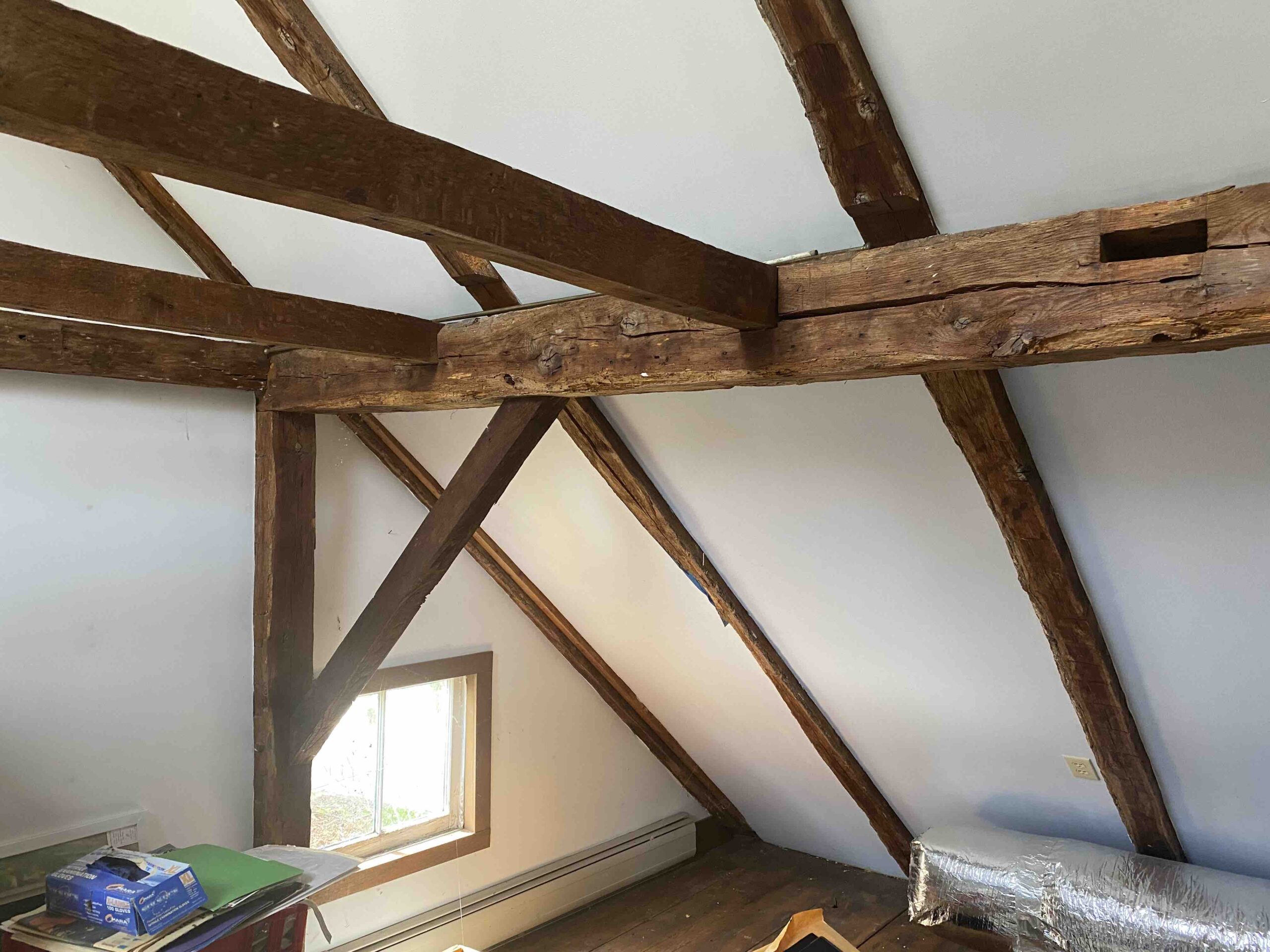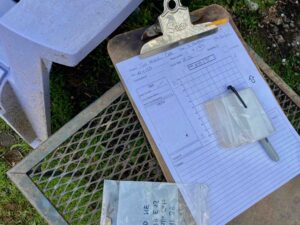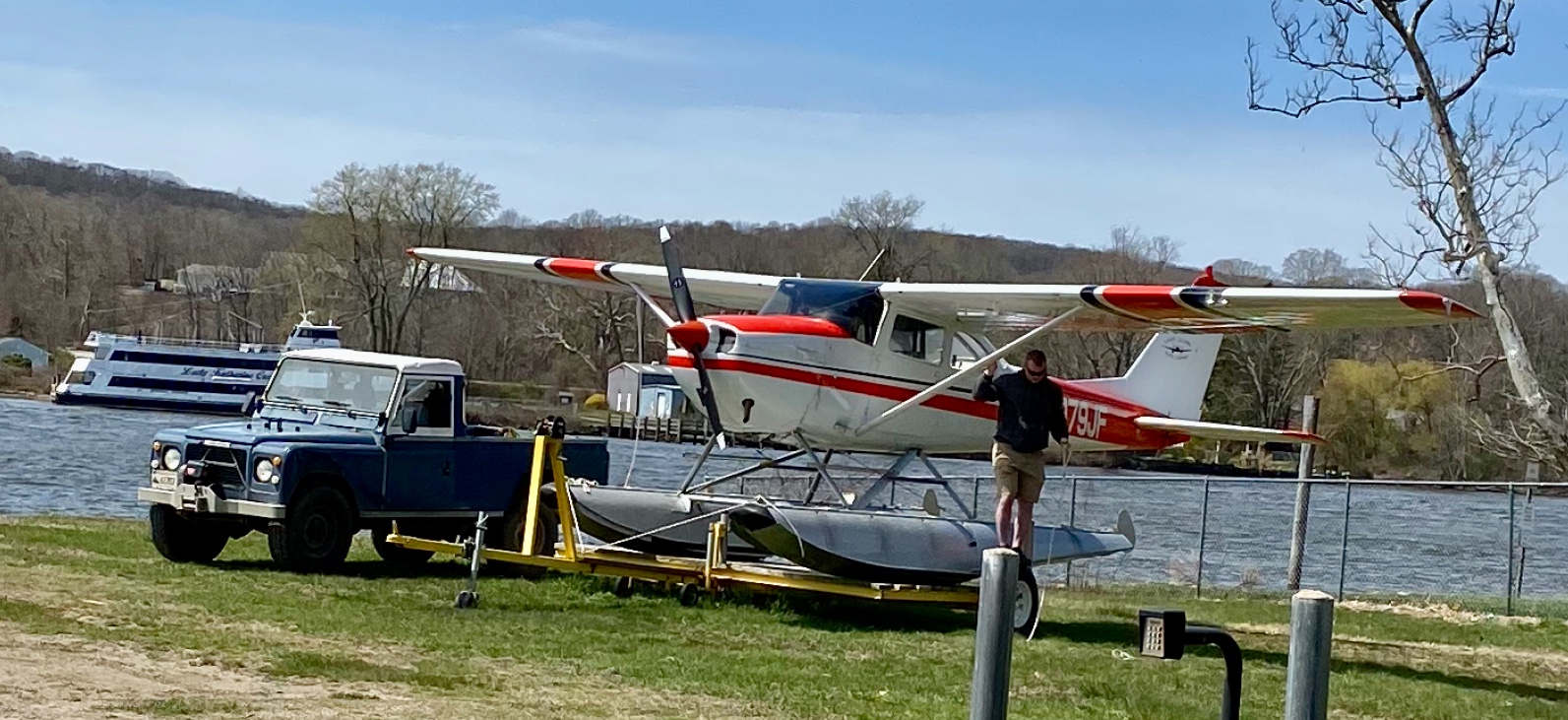Then And Now On Site: Two Wrasslin’ Cats, Layers of Time East Haddam
Telling stories. Now. Then. Back in time, unspooling because of a convergence of people and their combined knowledge.
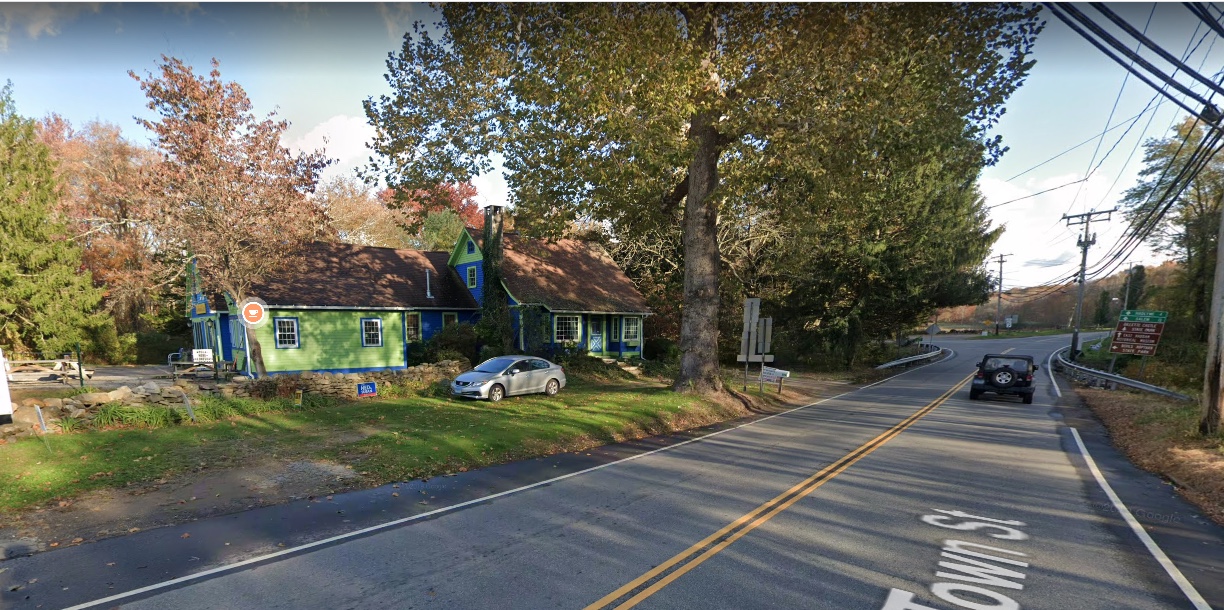
Seen via image Google Maps, linked to the site–Two Wrasslin' Cats, Town Street, East Haddam, Connecticut.
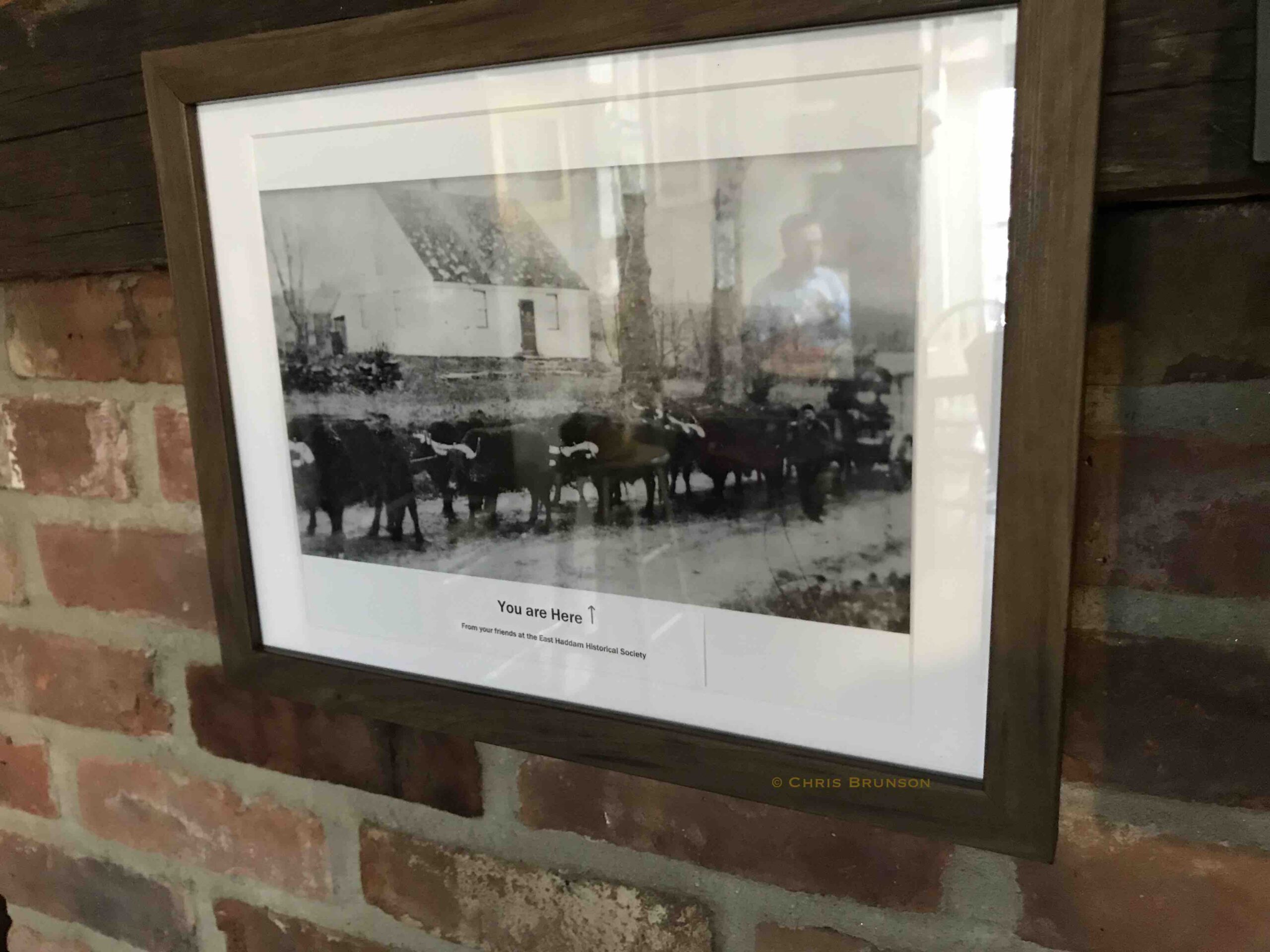
East Haddam, then. This home structure (seen behind the team of oxen and driver) is now a part of the Two Wrasslin' Cats complex. Note the two trees; one is still there? A sycamore.
Due to minor site work for the business, earth was moved. And a customer sat down outdoors to enjoy his coffee. Noticed an object below. (Most people would simply disregard what they would view as an odd-shaped scrap of stone.)
Because of life experience and educated eye, he then sparked a conversation with Mark Thiede, owner of the business, Now an archaeological dig is happening at the property.
Brian Scott-Smith is recording interviews for a future Connecticut East podcast. I'm here out of sheer curiosity, and to learn more.
Dirt is being moved, sieved, screened, scraped, examined. An emerging reddish fringe of a peony shoot grows at the edge of one excavation pit. This obviously was a former garden area, a nearby shed slightly ramshackle but telling its own story. Succor Brook runs by behind a stone piled wall at the edge of the land. Around the corner is Shagbark Lumber, visible through the still-bare trees as they start to bud and leaf out.
Eleven people called the original house home (1720 ! according to town records), now about a third of the structure that is the coffee house and cafe business. Below the main floor, an enormous stone center chimney, the size of a small room–seen on an impromptu quick tour by the owner. Thank you, Mark Thiede. Now the cellar floor is cement, but not so long ago it was packed earth.
A “secret” door (not open to the public area) is opened by Thiede and up we go on a stairway to reveal light and exposed beams. Thiede leads the way and provides a narration of how Two Wrasslin' Cats got its name from when he once lived in this space with his two lively felines to get his business growing. (That 11 people once called this square house footprint we are in home–keeps running through my mind as we step back to the main floor. Shelter in 1720; imagine what this are was like then. A well, a privy somewhere about the property. A shed, barn, livestock? Garden. Fenced by stumps pulled? No antibiotics, no phones. Independence and mind the ax while chopping wood, felling trees. Childbirth. Knowledge of plants that help would be a boon. Oh boy.)
In 2022, a passel of young cats play, skitter across the floor, pronk sideways, play fight, jump and zoom. It's the new cat room (sealed off by a framed glass door, so those who wish may enjoy the felines and restaurant goers can choose to watch, eat, write, be. (This is a place where each human's choice in life is respected; kindness is a standard practice.)
But the finding of chert fragments is the way to be here now.
This is officially the Two Wrasslin' Cats dig, East Haddam, Connecticut. (See clipboard notes written.) Listen to the water flow and sounds soothe your soul. Peel back time and imagine this land as a spot to sit and make tools, to think and dream, rest and plan. Be alive.
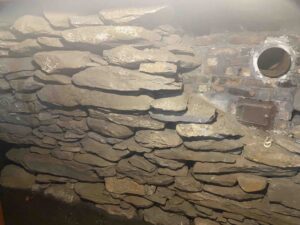
Underneath the section that was the original home section, this is just a portion of the massive center rock chimney. No mortar. Thinking of the effort to excavate the cellar space, then place each stone to then build the original house. Weather in each season. Winter. Howling wind and snow, ice, silence.
Also, for those interested in more exploration from near or far–the East Haddam Historical Society recently announced an interactive media site with interviews and resources, plenty of vintage images, histories.
We are excited to announce our new interactive media site: East Haddam Stories. With articles, photos and interviews of our towns vibrant history! Come see! It’s free! https://t.co/beaoPQNF6d. #easthaddam #moodus #hadlyme #cthistory
— EAST HADDAM HISTORICAL SOCIETY MUSEUM (@EHHSMuseum) April 15, 2022
Cave Hill, horses, dogs, Moodus stories.
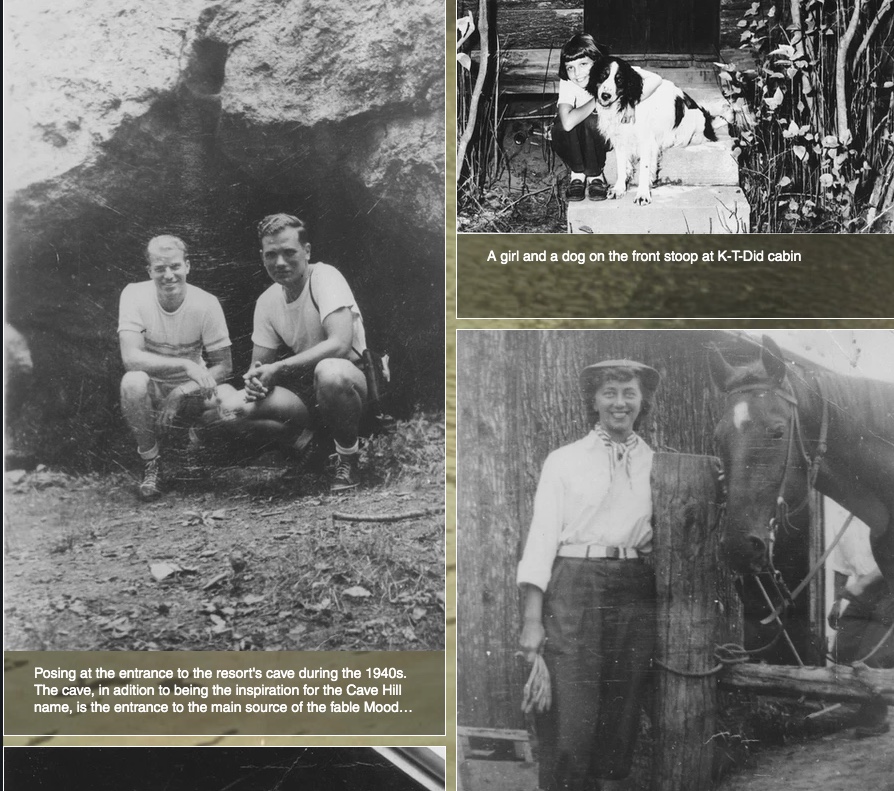
Cave Hill, East Haddam Stories via East Haddam Historical Society's new interactive site, linked to these images.
As aviation is a life passion, a must detour is the Goodspeed Airport with the magnificent Connecticut River as a backdrop. Sigh. Horses, geology, publishing, learning; history and business all intertwine. A life journey continues, one chapter closes and another unfolds.
Note: More exploration in the area via East Haddam Land Trust “PeGus's Path Preserve”–this 12.5-acre woodland is dotted with boulders left by ancient glaciers and surrounds a small stream that feeds into the headwaters of Succor Brook – one of East Haddam's many waterways that feed the Connecticut River. The preserve is named for Peg and Gus Carlson who had a shared vision of partnering with East Haddam Land Trust to protect their cherished woodland sanctuary. PeGus's Path is now enjoyed in Peg's and Gus's memory while hiking, horseback riding, finding woodland wildflowers, and enjoying the sound of the babbling brook.” Stay vigilant for ticks, take preparations before venturing out and protect your canine as well. Please check first if dogs are allowed on land trust properties before you venture out. Leash dogs so others out and about may also enjoy their walk. (As my own dog had back surgery, while I love dogs–she could not interact and play for quite some time.) Having received the second booster in April 2022, bring a mask and continue with good public health sanitation practices as they work. Respect choices made by those you see wearing masks. An update with a link will be posted here when the podcast about the dig is published. Curiosity will take you places worth seeing, to meet people and collect stories. Now look at that.

